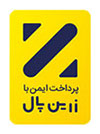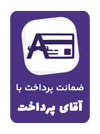I am so proud to be hosting the May edition of the Raising Multilingual Children blogging carnival and bringing together a wonderful array of insightful posts from my talented fellow blogger friends. “How can technology help to raise a bilingual child” is the topic I chose for the carnival and I am so happy I did, because you are in for a treat with tips of new websites and programs as well as ideas on how to creatively use old and trusted resources.
1. Skype
Judging by how many contributors mentioned it, Skype is definitely the number one technology tool for a multilingual family. It helps you maintain a close bond with grandparents, other relatives and friends who you are not able to frequently visit.
I love Annika’s idea of sharing a mealtime over Skype with a family member who is away! It is also great how Annika’s daughter connects with her French grandparents 2000 km away as soon as she comes home from school in Finland. I fully agree that it is a good idea to sometimes leave the children to communicate on their own with their grandparents as they will speak more freely if the parents are not present.
Adriana has noticed that over Skype her children sometimes answer in Romanian even if they are reluctant to do it with her.
Thereza finds that not only is Skype an excellent way for her children to practice their Portuguese, but the grandparents also get a chance to follow their grandchildren’s growth. Using the instant messaging feature of Skype is also good writing practice in a natural way. Thereza also describes in a wonderful way how she and her family and friends make music together over Skype.
Galina is thankful to her children’s grandparents who have been able to read her older child a story while she puts the younger one to sleep – virtual baby sitting!
Technology is not only for the young – Amanda’s father, who is in his 80’s is an avid Skype user and has even introduced his friends of the same age to the wonders of modern technology.
There are of course other programs you can use besides Skype: Facebook’s FaceTime and Google+ to mention but two.
2. Free online books
Reading is so important for language learning and there are several fantastic websites that offer free books in several languages.
Maria has collated and excellent list of websites where you can find a suitable children’s book in your language.
Michele has found Spotify to be useful for finding audios of nursery rhymes and stories – note that the stories will be interspersed with adverts if you go for the free option.
Frances uses audio books to teach her children to read Spanish.
3. YouTube
Just like Skype, YouTube is a popular resource for multilingual families.
Adriana uses it for nursery rhymes and cartoons, Annika for videos and music.
Leanne has found YouTube videos to be a great help to teach children French children’s songs. It’s almost as if I could hear them now! She has also put together a downloadable pdf to go with the songs.
I would also encourage you to search for other topics presented in the target language – look for anything your child is interested in, be it sports, crafts, movie stars, kite-flying, cooking, you name it!
4. Radio stations
Many radio stations are nowadays streamed online, so you can listen to them anywhere in the world.
Annika has found the TuneIn service to be useful and
Adriana sometimes plays a French radio station in the background when her children are playing. Adriana also found radio to be a useful tool to learn the rhythm and melody of a language when she was learning Swedish herself.
When you have lived a long time away from your original homeland, it does sometimes feel that you are getting a bit rusty with your own language and I have found listening to a radio station a good way to keep up with new words and trends.
5. Music
You can of course listen to music on YouTube and on the many available radio stations, but there are also other places to go for music in specific languages: Spotify, Grooveshark and Soundcloud to mention a few.
As Amanda points out, good old CDs shouldn’t be forgotten – they can be played to a captivated audience during car journeys!
6. Social media
Social media is the way to stay in touch nowadays.
Annika states that her daughter will spend time on Facebook anyway, so she welcomes her keeping in touch with friends in France and at the same time practicing her French and keeping up with the latest lingo and popular culture.
Leanne uses social media alongside forums and blogs to not only stay in touch with family and friends but to connect with other parents and educators who have the same goals.
I find that since a lot of the communication on social media is through writing, it can also give this side of language a real boost.
7. Educational apps and websites
Leanne has has found two apps that are perfect for her French speaking children.
Annabelle writes about her family’s favourite iPad apps to support her childrens language development.
In Amanda‘s post you can find information about her five top favourite Chinese learning apps.
In addition to all the above, don’t forget educational websites created by teachers and other tutors in different languages, and the many other apps that can be found for learning languages. These are often especially well suited for older children to polish their language skills.
Caveat
Reducing the screen time for kids is a much talked-about topic and, like Leanne, Annika and Adriana point out, not without reason – it might be easier said than done, though, as Olga noticed when she tried to set stricter rules.
Yes, we should embrace what modern technology can offer us, and use it to our advantage to pass on not only the language but also culture and traditions, as Olga points out.
Among this plethora of technological resources let’s however never forget that nothing can replace a face-to-face discussion or a bedtime story with a real book.

 Persian
Persian  English
English  Arabic
Arabic 


